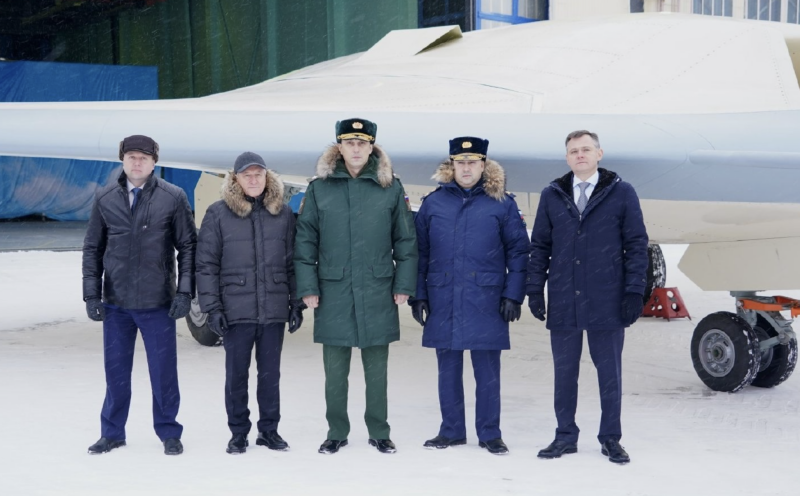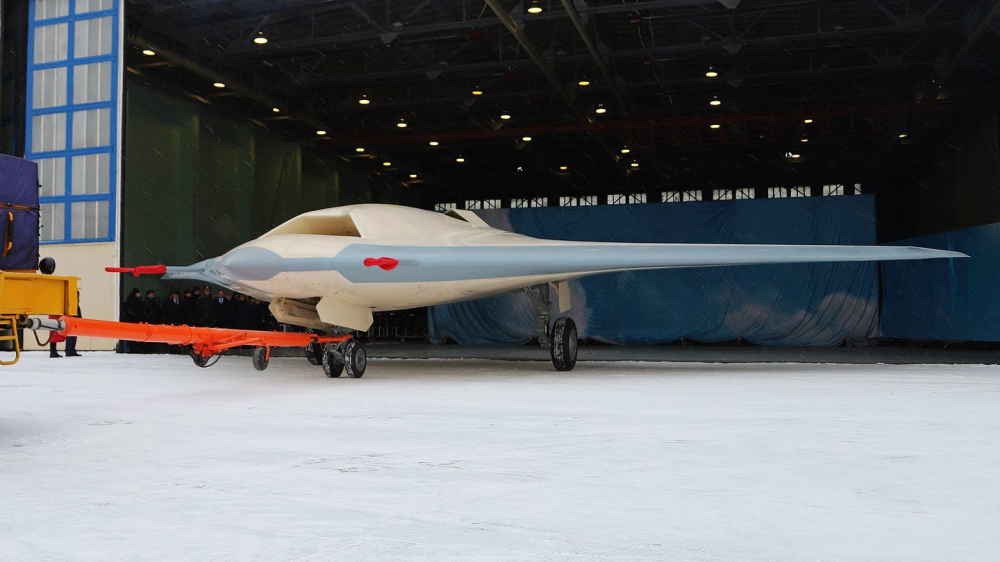The second flying prototype of Russia’s S-70 Okhotnik unmanned combat air vehicle (UCAV) has emerged, and it features the long-awaited stealthier nozzle configuration, among many other refinements, that should maximize the low observability and combat effectiveness of the production version.
While the redesigned Sukhoi drone has yet to fly and still has a long series of evaluations ahead of it, Russian Minister of Defense Sergei Shoigu has confidently predicted that test work could be completed sometime next year, paving the way for an order for the Russian Aerospace Forces, or VKS.
https://youtu.be/uutw544hSuo
The more production-representative flying-wing UCAV was rolled out today at the Novosibirsk Aircraft Production Association, or NAPO, in southwestern Siberia, where the drones are being built on behalf of the Sukhoi design bureau. The unveiling of the second Okhotnik was attended by Russian Deputy Minister of Defense Alexei Krivoruchko.
“The roll-out of the UAV marks the completion of the assembly of the product as a whole, equipping it with all the necessary onboard equipment in accordance with the requirements for the aircraft, and the transition to complex ground tests to prepare for the first flight,” Krivoruchko said.
As for the engine used in the Okhotnik, this was previously reported to be a variant of the AL-41F turbofan that powers the Su-35 Flanker multirole fighter and initial versions of the Su-57 Felon new-generation fighter. It’s unclear whether the second prototype retains the same powerplant, but it’s obvious the engine exhaust has been entirely reworked, with the new, flat jet nozzle tailored to reduce infrared and radar signatures.
Beyond the deletion of many humps and aerials, overall, this version of the Okhotnik has an outer skin that is more refined, with fewer seams and traditional mechanical fasteners visible. This is similar to the difference we have seen between the T-50 prototypes and the more refined production-representative Su-57s.
Taken as a whole, this latest S-70 derivative does seem to represent a leap forward in Russia’s ability to execute on low-observable technologies and manufacturing abilities, even if it still lags behind some of its peers. Still, just rolling out this aircraft does not mean it will all work as advertised. Two very challenging elements of low-observable design, and especially when applied to flying wings, are the exhaust and gathering reliable air data without compromising stealth. So, we will have to wait and see how successful Russia is at making the new exhaust work and eventually deleting the air data probes that severely compromise the Okhotnik’s stealth potential.

Russian Deputy Minister of Defense Alexei Krivoruchko, center, together with other defense ministry and industry officials at the rollout of the second prototype Okhotnik in Novosibirsk today. The scale of the nose landing gear provides an idea of the size and bulk of the UCAV
Krivoruchko’s visit to Novosibirsk brought further confirmation that the Okhotnik is intended to operate alongside manned aircraft as well as independently, either alone or as part of a larger formation. “Okhotnik is a highly intelligent system capable of solving a wide range of tasks individually, in a group and together with manned aircraft,” Russia’s state-run media outlet RIA Novosti reported, citing the deputy defense minister.

